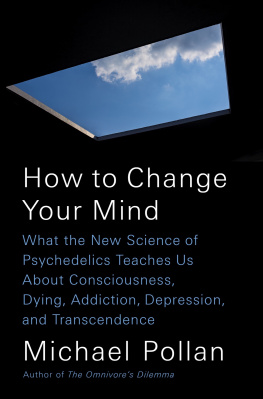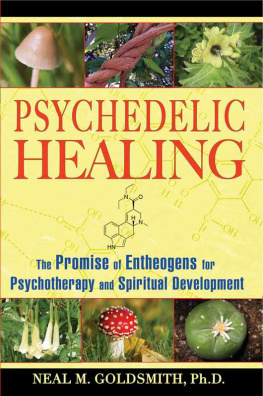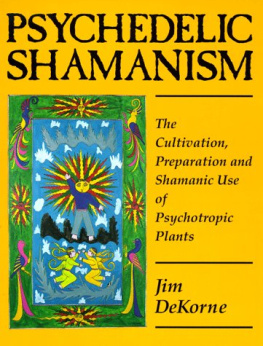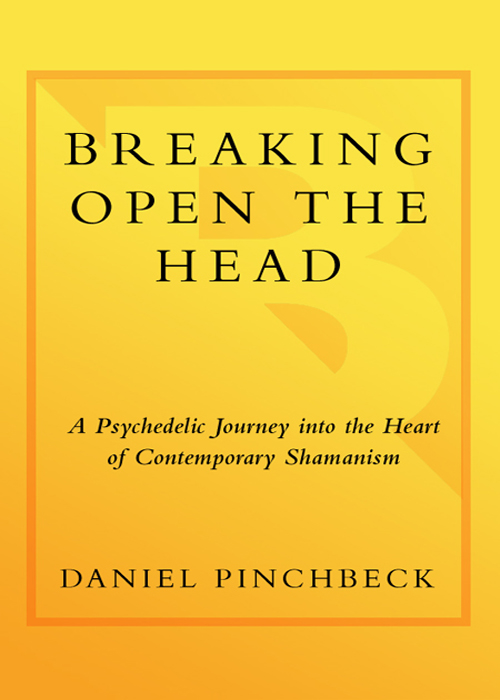
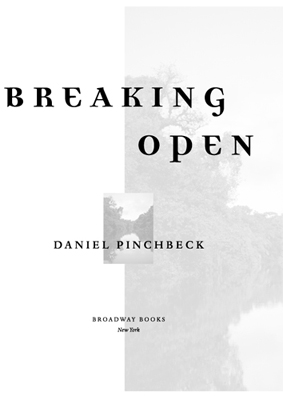
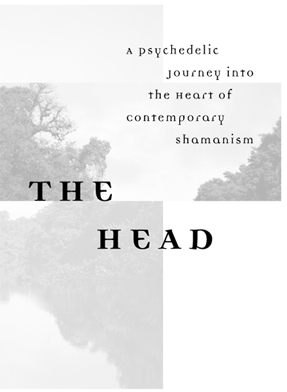
contents
For Laura
And in memory of my father,
Peter Pinchbeck

One must explore deep and believe the incredible to find the new particles of truth floating in an ocean of insignificance. JOSEPH CONRAD
Introduction
W hen I began this book, I wanted to solve a mystery. I wanted to know why certain substances are revered in tribal societies throughout the world but repressed as well as ridiculed in contemporary Western cultures. In the West, these substances are called psychedelics, a class of drugs that radically alter consciousness and perception. Unlike heroin or cocaine, most psychedelics are neither physically harmful or habit-forming. Yet they are considered so frightening and dangerous that possession of them is punished by long prison sentences. Although they were once thought to expand consciousness, which sounds at least theoretically desirable, no sane adult can be allowed legal access to them.
The word psychedelicmind-manifestingwas coined in the 1950s during our cultures brief enthusiasm for chemical self-discovery. The term itself is a bit vague, as the entire set of these substances tends to escape precise classification. In this book, I have, for the most part, limited my discussion to traditional and well-known visionary catalysts including psilocybin-containing mushrooms, peyote, the Amazonian potion ayahuasca, LSD, iboga, and dimethyltryptamine (DMT). I have also looked into a few recent discoveries. To keep my task manageable, I have not discussed marijuana or ecstasy (better described as an empathodelic), or ketamine (an anaesthetic inducing out-of-body experiences).
In the mid-1960s, most of the known psychedelics were outlawed, and the mainstream vogue for consciousness expansion ended soon after. In the next decades, the media repeatedly associated psychedelics with blown minds, wasted potential, and social chaos. The notion persists that to dabble in psychedelics, to trip, is to risk madness.
Preserved in pockets of the undeveloped world, shielded from the rapid ravages of modernization by dense jungles or mountains, it is still possible to encounter intact shamanic cultures. Among these people, plants that induce visions are the center of spiritual life and tradition. They believe that these plants are sentient beings, supernatural emissaries. They ascribe their music and medicine, their cosmology and extensive botanical knowledge to the visions given to them in psychedelic trance. For tribes in Africa, Siberia, North and South America, and many other regions, rejection of the visionary knowledge offered by the botanical world would be a form of insanity.
While researching this book, I visited shamans in West Africa, Mexico, and the Ecuadorean Amazon. In Gabon, a small country on the equator, I went through a Bwiti initiation, eating iboga, a psychedelic rootbark that induces a trance lasting for thirty hours. Some of the Bwiti call this ceremony breaking open the head. The bark powder temporarily releases the soul from the body, allowing the initiate entry into the African spiritual cosmos, where he is shown the outline of his fate.
Breaking Open the Head follows two tracks. On the one hand, I examine the cultural history of psychedelic compounds in the modern West, looking at the intersection of archaic drugs and modern thinkers leading to the 1960sa failed mass-cultural voyage of shamanic initiationand up to the present day. One inspiration is Walter Benjamin, the German Jewish thinker who experimented with hashish and mescaline in the 1920s. Benjamin thought that visionary intoxication, achieved through drugs or other means, could be a profane illumination, shattering the hypnotic trance of modern life. The reader, the thinker, the flaneur, are types of illuminati just as much as the opium eater, the dreamer, the ecstatic, Benjamin wrote. Not to mention that most terrible drugourselveswhich we take in solitude.
That most terrible drug, myself, is the subject of the books other inquiry. Once upon a time, not so long ago, I was a typical Manhattan atheist, suspicious, cynical, disbelieving in metaphysical possibilities. Due to a tweak in my character, my cynicism increasingly tormented me. Without any higher vision, life seemed unbearable and pointless. Compelled by my despair and self-disgust, I decided to poke at the limits of my disbelief. If not the safest or most legal route, certain chemical catalysts seemed the fastest and most direct means of self-testing whether this reality was all that could be known.
Taking myself as a psychedelic case history, I describe my own leaps and crashes through the neurochemical looking glass. Breaking Open the Head tells the story of how my own head was broken open, and how I have gingerly tried to put the pieces back together. It is the record of a subjective, incomplete, occasionally harrowing, often alienating, yet exhilarating and fun process of discovery and transformation.
I believe that psychedelic drugs, used carefully, are profound tools for self-exploration. The forbidden substances can be a precision technology for revealing the interstitial processes of thinking, the flickering candle sputters of emotion, the fine-tuned machinery of sense perceptions. The unfolding of the self through an increase in perception, cognition, and feeling is one level of the trip. On low doses, that is all you get, and often it is enough.
The next level begins where consciousness, suddenly able to go beyond its normal boundaries, bursts open on the nonordinary world. It fascinates me that these two levels are so closely related. It is as if the mind were a rocket, gathering force as it speeds along a runway until it finally lifts into space, beyond the tug of gravity, where all the rules are different. Why should a process that begins by sharpening normal perceptionsmaking colors brighter, enhancing awareness of patterns in naturelead seamlessly into abnormal perceptions, into paintings that breathe, statues that dance, trees that writhe with faces and limbs? Not to mention, as yet, those geometric and hallucinatory vistas of unleashed Otherness, revealed to the closed eyes.
The visionary power of psychedelics remains a mystery, one that was abandoned by the scientific academy when psychedelics were made illegal a generation ago. Equally mysterious: Why should the private exploration of ones inner reality, by chemical or other means, be considered a serious threat to a free society?
In The Long Trip, a study of visionary drug use through history, Paul Devereux muses: I sometimes wonder if our culture, acting in the manner of a single organismin the way a crowd of people or a classroom of students sometimes cansomehow senses a deep threat to its own philosophical foundations residing in the psychedelic experience. This might help account for the otherwise irrational hatred and repression of the use of hallucinogens, and the smirking dismissal of the psychedelic experience as a trivial one by so many of our intellectuals.
It is the nature of repression to be invisible. Something that is repressed cant reveal itself to us, cant appear as a break in our awarenessthen we would see its workings, and the repression would be dispelled. In a world of information overload and perpetual distraction, repression manifests as a dismissive giggle, a yawn of boredom, a sin of omission.
Next page


